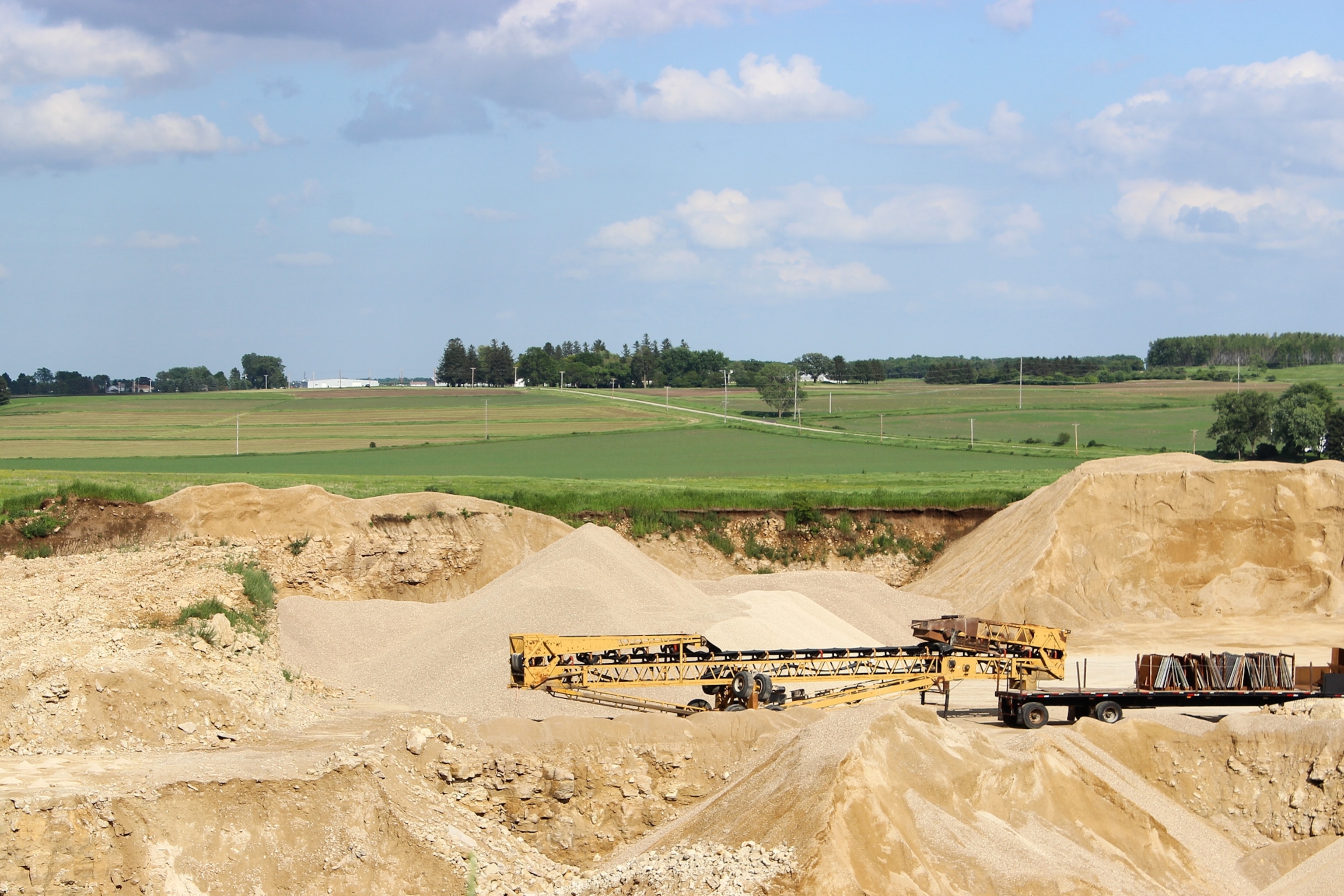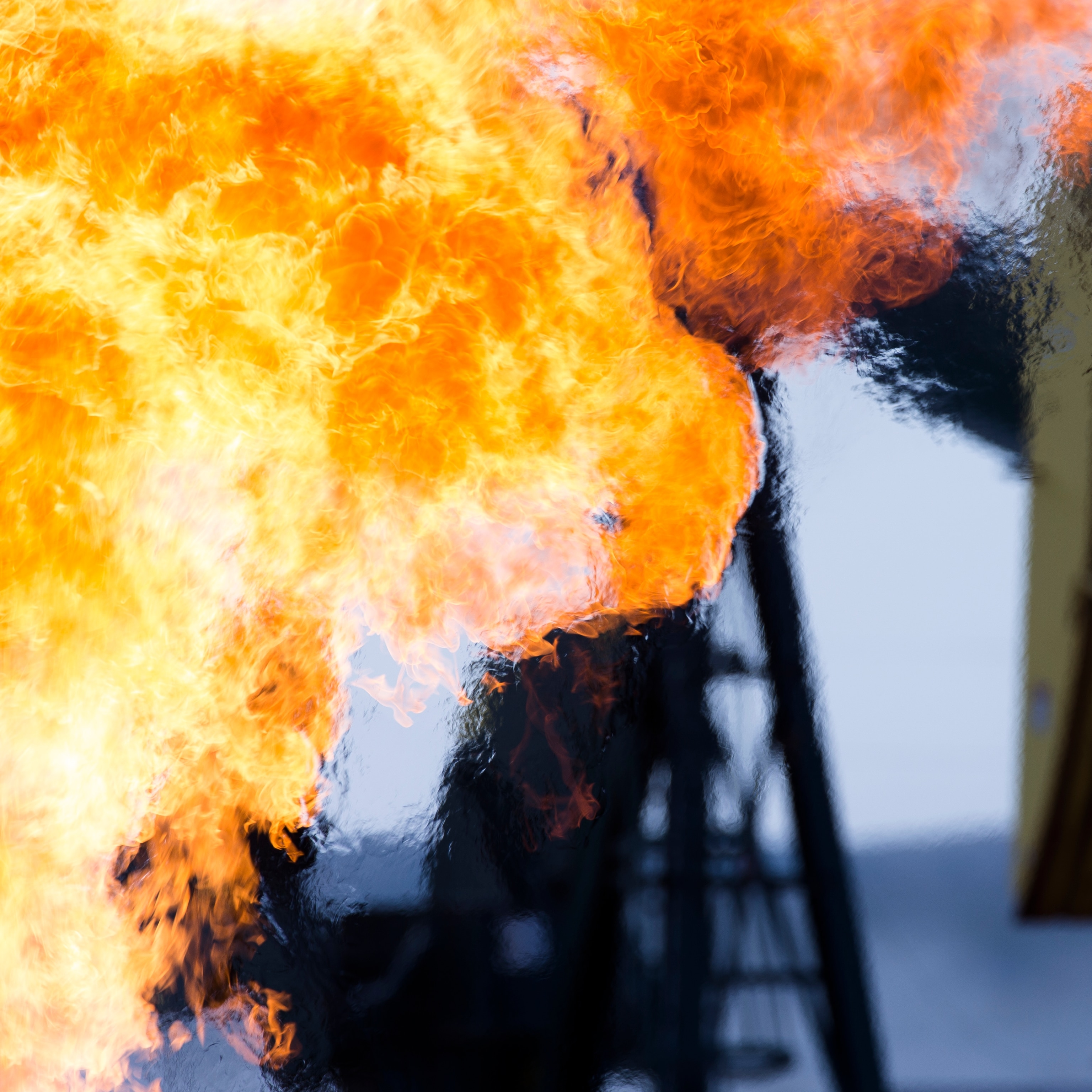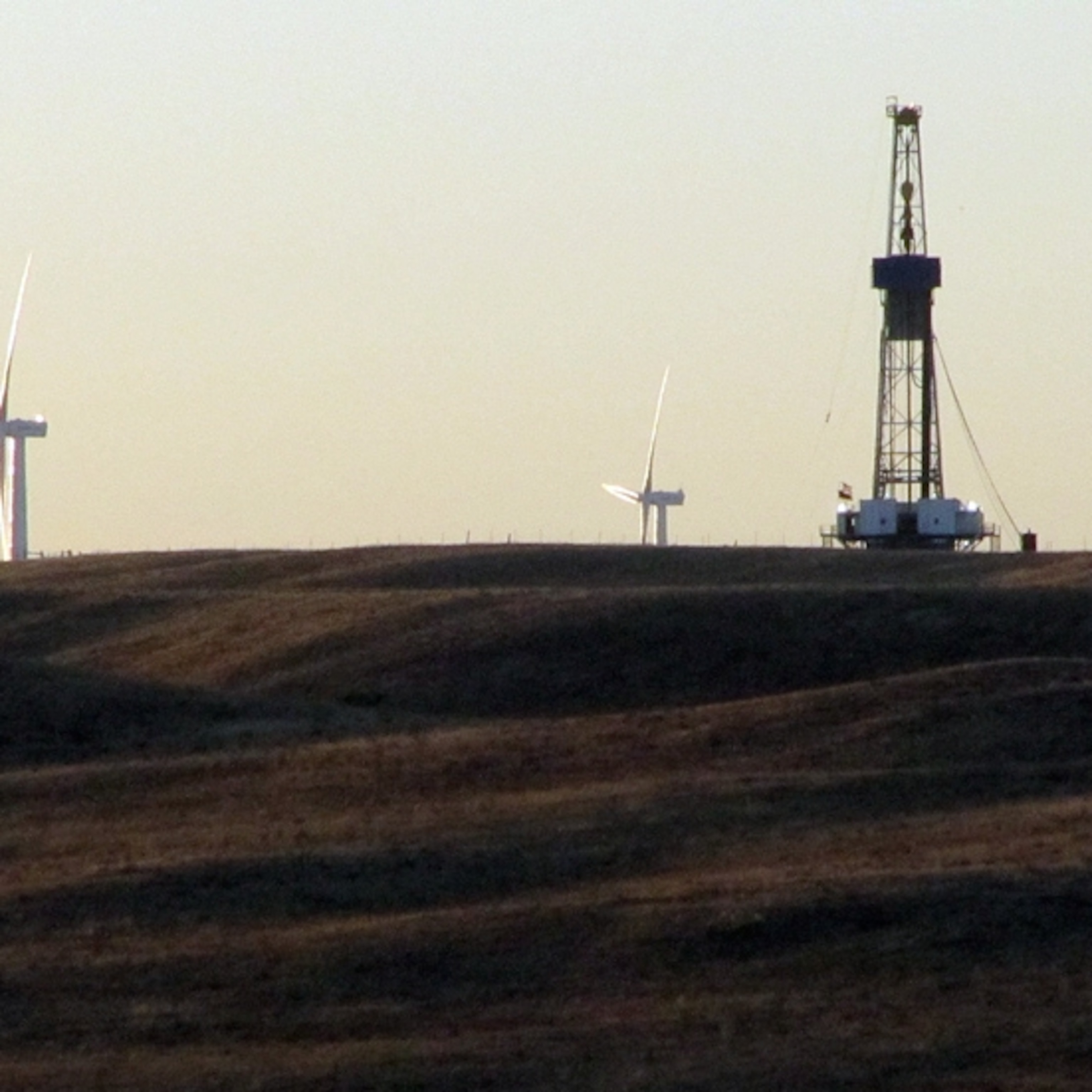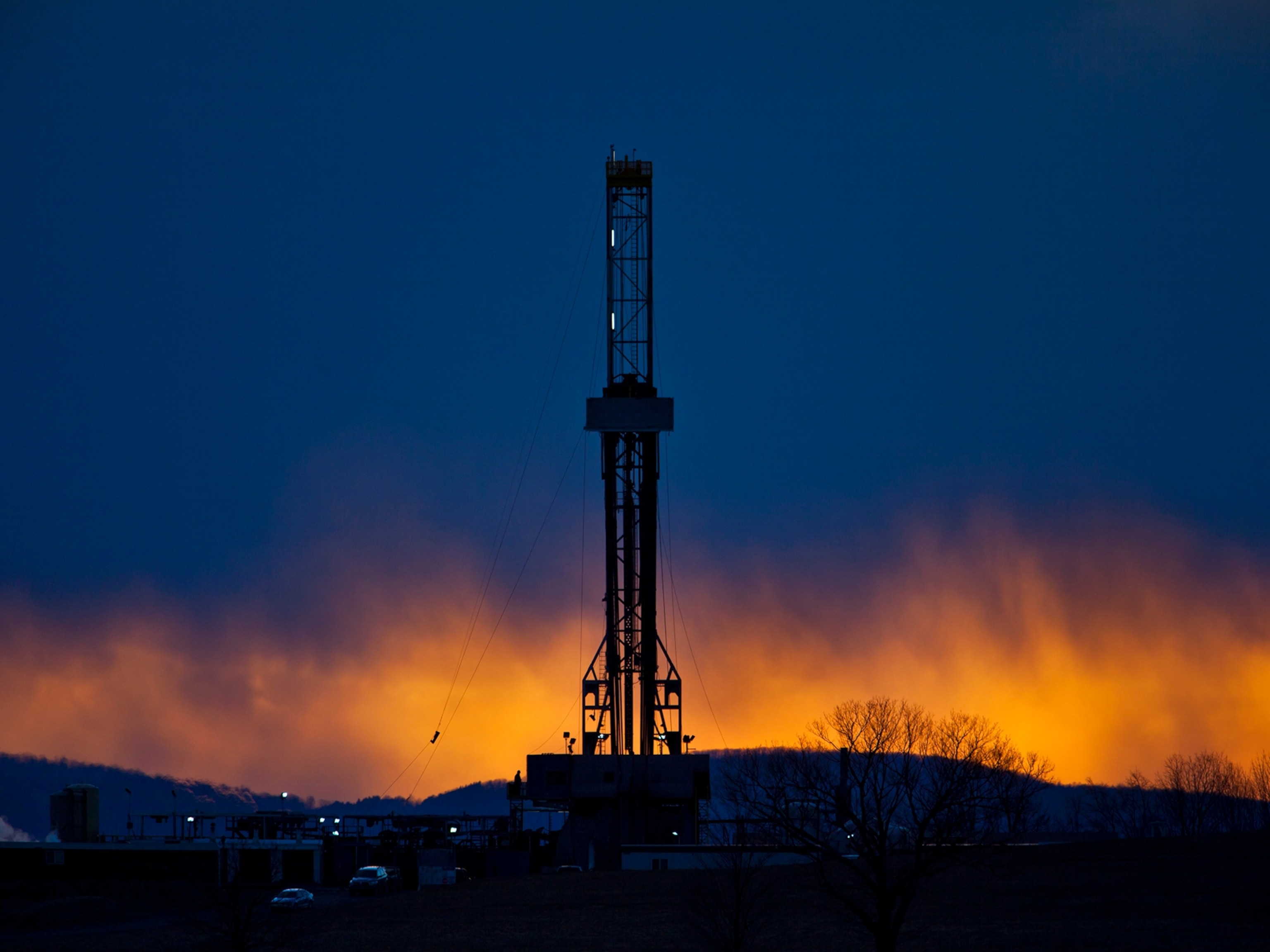
Sand Rush: Fracking Boom Spurs Rush on Wisconsin Silica
It takes sand—loads of it—to open the cracks in shale rock that allow natural gas or oil to flow into hydraulic fracturing wells. To do the job, the industry is digging into the vast ancient silica reserves of Wisconsin.
They look like pyramids in a cornfield, or sea dunes mottled by the summer rain.
But these stockpiles hold one of the secrets to America's energy revolution. The heaps of dozer-hauled, diesel-crushed grains are pure silica sand, and the future of fracking depends on stripping hundreds of millions of tons of it.
Every day since the rush began about two years ago, thousands of laden train cars rumble out of the world's unlikeliest sand castle—Wisconsin—headed for oil and gas wells from North Dakota to Pennsylvania. (See related story: "Natural Gas Nation: EIA Sees a U.S. Future Shaped by Fracking.")
Strong and ancient, the grains shimmer like gems in the warm sunlight. Branded "Northern White," this pedigree of sand boasts 99 percent quartz and a compressive strength between 6,000 and 14,000 pounds per square inch. This makes the grains ideally round and durable to prop open underground shale formations fissured by horizontal drilling and hydraulic fracturing, or fracking. (See related interactive: "Breaking Fuel From Rock.") The unique region of quartz-rich sandstone extends into southeastern Minnesota, which also has seen a surge of mining activity; but Wisconsin, in part because it has nearby rail capacity for shipping, has been the epicenter of the boom.
In the fracking process, sand is suspended in a chemical slurry and pumped thousands of feet underground. The high-pressure fluid cracks open the shale rock. Sand flows into these fractures and "props" them open like trillions of tiny marbles, allowing dislodged crude oil or natural gas to seep out.
Consumed by the bargeful, "proppant" sand is cheap, heavy, and essential. One fracked well in the Marcellus shale region, for example, can slurp several million pounds of it. A single fracked well can require 10,000 tons of industrial silica sand, according to Minnesota's Department of Natural Resources.
Ceramic beads and other man-made alternatives exist, but they cost more to make and transport.
So an estimated 30-40 million metric tons of frack sand will be mined this year. That's a double-digit increase from last year and the year before that. Although Texas and Illinois top the list of U.S. industrial sand producers, thanks to their large processing operations, most of the sand for fracking will come from the Midwest, primarily the red-hot mines of Wisconsin and Minnesota.
"I've never seen anything like this, but I'm getting kind of used to it," said Thomas Dolley, a mineral commodity specialist for the U.S. Geological Survey.
Building on Sand
According to USGS, sales of frack sand increased by 77 percent between 2010 and 2011. The industry is valued at more than a billion dollars in the United States alone. A frack sand company, U.S. Silica, went public on the NYSE for the first time last year.
"Some people tell me this is going to blow over," said Dolley. "But for the foreseeable future I don't see production tapering off."
"It came so quickly," said Thomas Quinn, a former dairy farmer in Downing, Wisconsin.
A new 400-acre frack sand facility has been proposed near his rural home. While many in his village have voiced opposition, neighboring Glenwood City could "balloon annex" the land needed to build the site.
"I fell in love with this area because of the hills," said Quinn. "If this thing is approved I'll live 500 yards away from a sand stockpile."
In Wisconsin—which produces no oil or natural gas—companies like Preferred Sands LLC, which has two locations near Eau Claire, tout a six-track rail network and sand reserves of up to 30 million tons.
Other states mine sand, but the bluffs and ridges in Wisconsin are uniquely accessible—denuded by time, and uplifted by an arching landmass. The sandstone outcrops of prime frack interest lie in what geologists call the "driftless area": a unique bubble in Wisconsin that was spared from glaciation during the last ice age. In other words, these outcrops were never smashed and buried under glacial debris, as was the bedrock in much of the rest of the state. So they are easy to find and excavate.
"The sand is so valuable because Mother Nature has done the work for us," said Dolley of the USGS.
In two years a hundred new or proposed mines have cropped up in the state, mostly in the central-west. Almost overnight, rolling counties like Chippewa and Trempealeau sprouted conveyor belts, processing plants, and multi-million dollar investors.
By some estimates, that could mean 9,000 truckloads of frack sand leaving the state every day.
"The industry knew the value of this resource," said Quinn. "But it's been a scramble for the rest of us."
Northwest Territory's Mineral Riches
The modern-day sand rush has taken many Wisconsinites by surprise, but the extent of the resource here was reckoned 170 years ago by a prodigy in a birch bark canoe. A decaying map sealed in state archives holds the key.
Armed with ink, horse, and "half-breed" guides, David Dale Owen was a 40-year-old mineral agent assigned by the U.S. Treasury Department to chart a "geological reconnaissance" into Chippewa country—33,000 square miles in the heart of the "very large and unsettled" northwest territory.
By late summer 1847, the year before Wisconsin became a state, the territory's wealth of ore and bedrock was yielding to Owen's young science. He gushed his findings in an official report to Washington.
Copper and zinc deposits dazzled. The lead overflowed. Iron promised riches, he claimed, even if "amphitheatres of sand" vexed much of the landscape and harbored rattlesnakes.
Owen was a Scot-born doctor, artist, Utopian Socialist, and geologist. He headed a party of more than a hundred assistants. What they found would explain the multimillion-dollar sand rush into Wisconsin farm country 16 decades later: The formations here are like almost nowhere else on earth.
Deposits of limestone, gneiss, and other strata fill Owen's map, marked by pink, orange, and blue watercolor brushstrokes.
But it's the slash of yellow paint that cuts most boldly across the paper. The hand-drawn key in the corner mistakenly labels the swath as "protozic sandstone."
Geologists now know that northern white sandstone is about 500 million years old, from the Cambrian and Ordovician periods. A crescent of such bedrock undergirds much of western Wisconsin, and Owen realized it.
This sandstone is not primordial like the billion-year-old quartzite north of Madison, nor as young as the ice age rubble blanketing much of the state. But its formations tell a unique tale of storm-whipped inland seas and odysseys of erosion.
The world that wrought today's frack sand looked far different than the world of today. North America languished in the tropics atop its tectonic plate, carrying Wisconsin 10 degrees south of the equator and tilted on its side.
The continent was flat and crusty, and grit swept across the Precambrian plains.
No leaves or roots strained against the vicious winds. Plants hadn't yet evolved on land.
But seas submerged and receded from the region for the next hundred million years. The Jordan, Wonewoc, and St. Peter deposits that today yield frack sand are the inheritance of those rhythms.
Some of the millions of tons of sand projected to leave Wisconsin this year will be mined underground from tunnels driven beneath rock layers. Otherwise, the choicest outcrops can be spotted from the highway.
This accessibility is key. Extraction doesn't have to mean explosives here. Sometimes blasting caps are required to dislodge tightly cemented sand, but often excavators simply ladle it from hillsides.
Following extraction, the freshly carved or blasted sand is washed with water and chemicals, and surge-piled until it's ready to be shipped. This processing can only take place from spring to fall, when the ground is warm enough to absorb the runoff. (See related story: "Water Demand for Energy to Double by 2035.")
Water usage is intensive. The process drinks swimming pools of groundwater for cleaning, sorting, and dust control. The Wisconsin Department of Natural Resource notes that for five planned sand mines in the northwest part of the state, expected average water use ranges from 420,500 gallons to 2 million gallons per day. The agency says it takes potential impacts on local water supplies into account in its permitting process. (See also "Health Questions Key to New York Fracking Decision, But Answers Scarce.")
After washing, the sand is dried in a rotary drum, and the choice particles are sorted. Most sand doesn't make the grade. Much ancient stone is too fine-grained. Younger glacial and beach sand is too angular and flecked with impurities.
The "just right"' sand can bag about $200 a ton after shipping to feed frack sites across the nation.
Lines Drawn in the Sand
Just as communities have been divided over fracking, the sand boom has drawn battle lines all its own.
"Industrial sand mining has been a solid job creator and economic contributor to Wisconsin for more than a century," said Rich Budinger, president of the Wisconsin Industrial Sand Association. "We owe our long and successful history here to a deep respect for the land, our neighbors, and our communities."
Budinger cites thousands of new jobs and investments across the state.
"We can operate safely and protect the environment while generating significant and very real positive economic impact," he said.
The sand boom has resurrected dying rail lines. Where sand is hauled by truck, local governments have insisted companies contribute to local infrastructure so citizens aren't left with the bill for ravaged roads.
But in rural and unzoned areas, oversight may be a mirage. Regulations envisioned for backyard quarries are being stretched to accommodate thousand-acre frack sand facilities.
Perhaps most controversially, permits for ambient silica dust lack guidelines for the public. Residents like Quinn fear the invisible, glass-like shards that can drift from processing yards and uncovered train cars.
Some experts agree.
"Our short-term measurements ... of the 'fine' particulates associated with cardiovascular disease, lung disease, and lung cancer around frack sand mines and processing plants are higher than the background regional values reported" by the government, said Crispin Pierce of the University of Wisconsin-Eau Claire.
Pierce said he is concerned the government does not require monitoring of fine particulates or silica "at the rapidly proliferating sand mines, truck and train transport routes, or processing plants" created by the frack sand boom.
The tug of priorities is leading to controversy.
Small towns and villages like Downing, Wisconsin, are facing big decisions, and neighbors are arguing.
"This community is divided in ways I've never seen," said Quinn.
Fresh investment and fresher salaries are winning the hearts of some locals, while others decry the out-of-town license plates and gobbling machinery. Many landowners have been grateful for the opportunity to unload unproductive acreage. Others, fearful of the dust that's being kicked up, shutter the kitchen windows when winds change. Gatherings held in school gyms debate the potential impacts on both property taxes and small-town tranquility. (See also: "Bakken Shale Oil Boom Transforms North Dakota.")
"In the end, I hope we have the core strength and core values to manage the pressure and money coming from outsiders," said Quinn.
In 1847, David Dale Owen, ogling the ores in "one of the richest mineral regions yet known in the world," could not have foreseen the gold blowing beneath his feet.
Sally Younger is a National Geographic Young Explorer grantee, who spent this past winter on a journey by snowshoe, sled, and foot on Wisconsin's Ice Age Trail, documenting the legacy of past climate change.
This story is part of a special series that explores energy issues. For more, visit The Great Energy Challenge.








